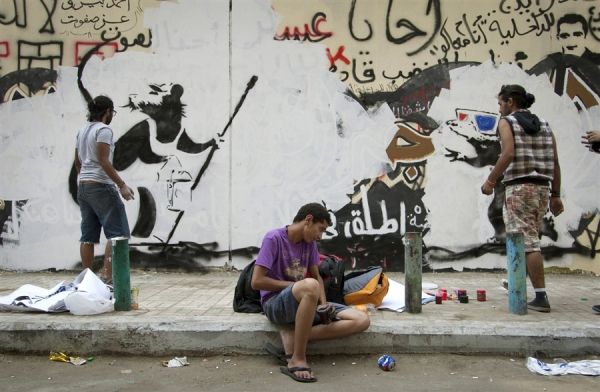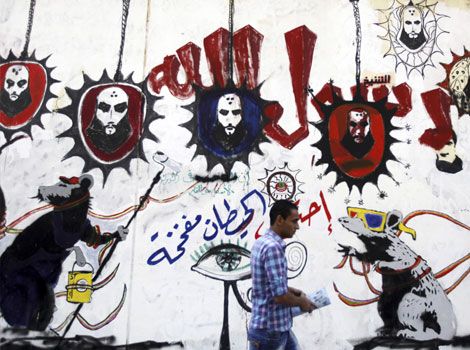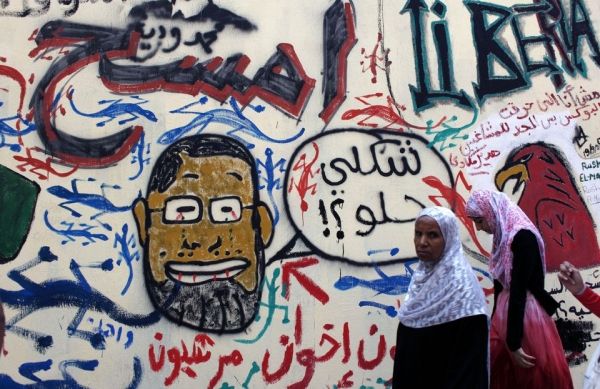Authorities in Cairo have worked to regenerate the central Tahrir square, which had suffered a decline since it acted as the main stage during the 18-day revolution in early 2011 that led to the overthrow of former president Hosni Mubarak.
The Cairo Cleanliness Authority installed traffic lights, rewired lampposts and laid new lawns and flowering shrubs in the middle of the square which has been battered by a year and a half's worth of protests, squatters and violent clashes but has also been marred by cases of petty crime and sexual harassment.
The most contentious move however was when city workers – backed by riot police – whitewashed a wall on nearby Mohamed Mahmoud St that had been covered in layers of colourful graffiti and images depicting the story of the revolution.
The move angered some graffiti artists who set about repainting the wall, this time with messages accusing the government of President Mohamed Mursi of attempting to "erase" the revolution. It also led activists to question Mursi's attitude towards freedom of speech, and to draw parallels with the regime that Mursi replaced.


















